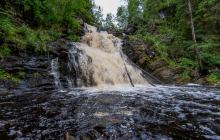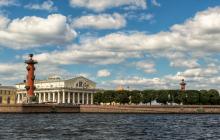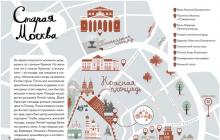The Oryol Polesye National Park is located in the northwest of the Oryol Region. It was created in 1994 with the aim of preserving the unique community of the southern Russian taiga and occupies 77,745 hectares. Coniferous and coniferous-deciduous forests, interspersed with forest-steppe vegetation, give the landscapes a unique originality.
More than 900 plant species and more than 270 species of vertebrates live on the territory of the national park, of which 23 plant species and 89 animal species are listed in the Red Data Books of different levels.
One of the main activities of the national park, which has been under way since 1996, is the formation of a stable free-style population of the European bison within the framework of the Program for the Conservation of Bison in Russia.
A complex of research works is being carried out in the national park, which makes it possible to trace the natural course of processes occurring in nature.
Within the framework of this direction, an inventory of the biological diversity of the nature of the national park is carried out; tracking the number of rare and background species of animals; monitoring the state of populations of rare plant species and the dynamics of plant communities; observation of weather, phenological and anthropological factors affecting natural complexes. Based on the results of these studies, the "Chronicle of Nature" is being compiled.
One of the leading places in the park's scientific work is devoted to research related to the formation of a large population of European bison. To date, 3 groups of free-living bison live in the forest-meadow ecosystems of the national park (Krasnikovskaya (Severnaya), Avdeevskaya (Centralnaya) and Alekhinskaya (Yuzhnaya), the total number of animals in them is 287 individuals (according to the results of registration in March 2013).
The territory occupied by bison is more than 150,000 hectares. This population ranks first in the number of purebred bison in Russia, second in the world after Belovezhskaya Pushcha, and has real prospects for further growth.
The problem of continuous monitoring of the bison population is solved by supplying control animals with collars with radio beacons, as well as using video tracking equipment at feeding grounds and in places of long-term dislocation of herds.
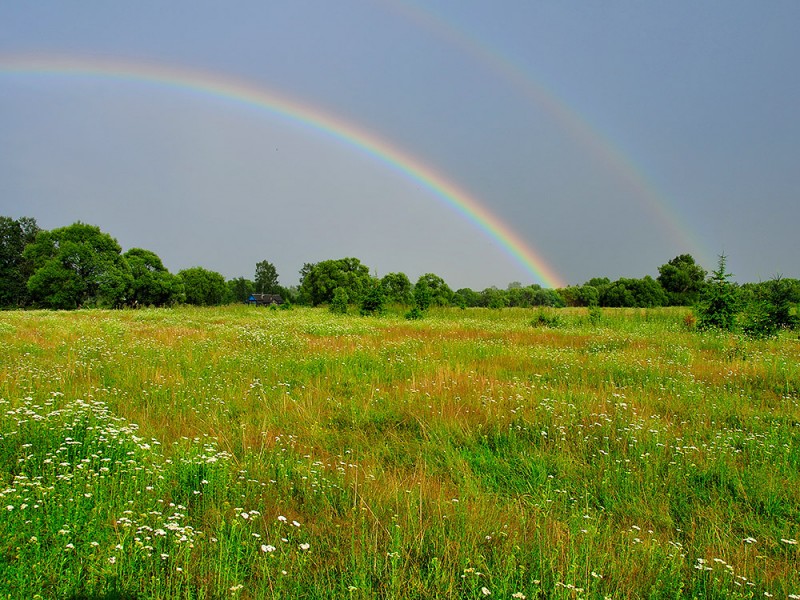
The park is also working to restore the desman population. Control over its settlement and adaptation is being carried out. In 2002, 10 pairs of these animals were released on reservoirs suitable for their habitat.
According to the results of the 2006 survey, it was established that they took root and spread along the Vytebet River several kilometers below the place of release and in the pond of the village of Lgov.
Since 2012, materials have been collected for the Atlas of Nesting Birds of European Russia.
In cooperation with OSU and MSU, detailed studies of the flora of the national park have been carried out for a number of years. Since 2003, vegetation has been studied according to the Braun-Blanquet method.
The territory of the national park has a rich archaeological potential. In the future, it is planned to rehabilitate the cultural and historical landscape and partially reconstruct archaeological monuments, in particular, the settlement of Radovishche.
On the basis of the collected scientific data, specialized databases and thematic GIS layers are compiled.
One of the main tasks of the national park is the preservation of natural complexes.
The duties of the security department employees (state inspectors for the protection of the territory) include: combating poaching, collecting primary scientific information, animal registration (winter route registration of mammals, registration of near-water animals, etc.), accompaniment and work with visitors.
The chief state inspector for the protection of the territory is the director of the national park.
State inspectors for the protection of the territory are endowed with the following powers:
To bring violators of the rules for the protection and use of the natural environment and natural resources to administrative and other liability;
To detain persons who have violated the legislation of the Russian Federation on specially protected natural areas (SPNA), on the territory of the national park, its protected zone and deliver them to law enforcement agencies;
Terminate any economic activity that contradicts the SPNA regime;
To confiscate products and tools of illegal nature use, vehicles, etc from violators;
Carry out the inspection of vehicles, things, as well as personal search in the prescribed manner;
Other rights in accordance with the legislation of the Russian Federation.
State inspectors for the protection of the territory in the performance of their duties have the right to carry and use firearms and special means in accordance with the established procedure.
For violation of environmental legislation in specially protected natural areas, administrative liability is provided in accordance with Art. 8.39 of the Administrative Code of the Russian Federation, as well as criminal liability in accordance with Art. 256, 258, 260, 261, 262 of the Criminal Code of the Russian Federation.
In cases of damage to natural complexes and objects by illegal hunting of animals, destruction of plants, the offender is obliged to compensate for the damage in the manner of civil liability.
On the territory of the national park, the most common type of violation is illegal passage of vehicles and parking off public roads. Isolated cases of unauthorized felling, illegal fishing and hunting are revealed annually.
Ungulates (sika deer, wild boar) are mainly victims of poachers. In most cases, the identity of the offenders can be established. When the offenders are detained, weapons are confiscated from them, as well as various tools for poaching.
Fauna
The territory of "Oryol woodland" in terms of diversity and abundance of fauna is unique for the Oryol region and for Russia in general. It is home to 271 species of vertebrates, among them the largest number are birds - 177 species (of which 136 species nest on the territory of the national park), there are 49 species of mammals, 26 species of fish, 11 species of amphibians, and 7 species of reptiles.
The fauna of the national park includes 89 species of rare animals, which are included in the Red Book of the Oryol region. Of these, 12 species are included in the Red Data Book of the Russian Federation: 1 species of insects (mnemosyne), 1 species of fish (sterlet), 7 species of birds (great and lesser spotted eagles, golden eagles, snake eaters, black stork, gray shrike, European average woodpecker) and 3 species mammals (European bison, giant nocturnal, Russian desman). One species - European bison - is listed in the World Red Book.
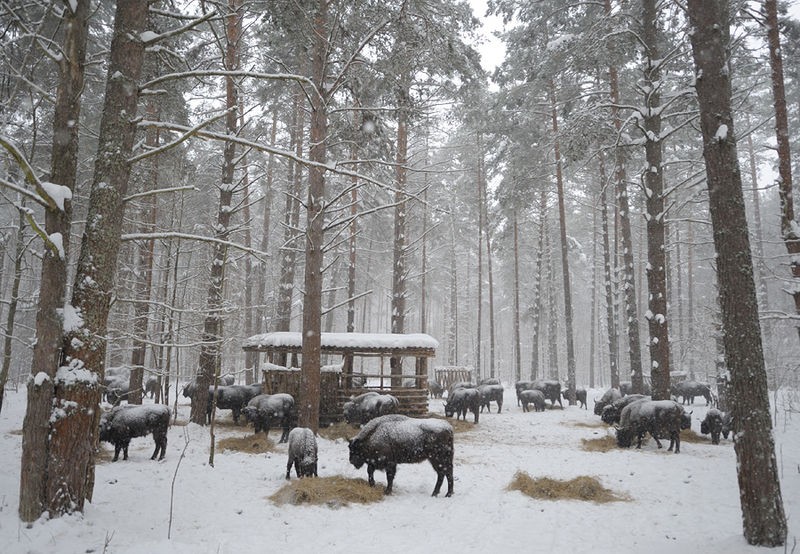
In Polesie, typical taiga species (capercaillie, hazel grouse, black woodpecker) coexist with representatives of the steppe fauna (steppe polecat, gray partridge, quail). In the park you can find red deer, elk, lynx, roe deer, wild boar and bison. On the territory of the park, salt licks are arranged and feeders for ungulates are equipped. In winter, many ungulates keep close to feeding stations, where they can be easily seen.
Beavers, otters, minks, muskrats, desman live on the banks of the rivers flowing through the park. In the park, work is underway to restore the population of the Russian desman - an ancient species, endemic to Russia.
At present, 287 bison live on the territory of "Oryol Polesye" and adjacent territories. In the period 1996-2001. 65 bison were brought to the national park. In 1998 the first bison was born. Since then, more and more bison born in the national park appear every year.
Since 2011, remote monitoring methods with the use of radio collars of various designs have been used to control the free population of bison.
Flora
The forests of the national park represent the eastern outskirts of the Bryansk and Kaluga forests. The total area of the national park is 77,745 hectares, including the land of the forest fund - 33,032 hectares. This is the largest forest in the Oryol region.
Forested lands are mainly represented by plantations of natural origin. The forests of the Orlovskoe Polesie National Park are distributed over the territory as follows: in the southern part, pine forests prevail on outwash sands; mixed and coniferous forests are widespread in the central part, fragments of oak forests are found in the floodplain of the Vytebet River; the northern part is characterized by deciduous and mixed forests confined to gray forest soils, less often - pure spruce and pine forests.
"Orlovskoe Polesye" is located at the junction of two natural and climatic zones - deciduous forests and forest-steppe. Green spruce forests, long-moss pine forests, lime and oak forests are adjacent to each other in the park.
The tree layer of mixed forests in various combinations includes Scots pine, European spruce, English oak, birch, linden, aspen, Platan-leaved maple, less often common ash and sticky alder.
More than a quarter of 914 species of vascular plants of the flora are represented by rare species in need of protection. Only on the territory of "Oryol woodland" there are more than 30 rare and protected plants that have not yet been noted in other areas of the region.
The reasons for their rarity are different: remoteness from their continuous range or being on its border, confinement to specific habitats, similarity with similar common species, collection of ornamental and medicinal plants, etc.
Prior to its creation, land reclamation and forestry work was actively carried out on the current territory of the park, which also led to a decrease in the number of many species of forest and bog cenoses, to the impoverishment of floodplain meadows.
Therefore, the creation of a national park with an appropriate regime for protecting the territory became necessary and a timely measure to preserve the unique natural complexes of the Vytebet river valley, areas of the southern Russian taiga and floodplain oak forests, deciduous forests and sphagnum bogs.
Tourist routes
A sightseeing tour of the national park includes a visit to the most famous places in Polesie. You will see the Holy Spring, the Old Lake, the Church of the Life-Giving Trinity in the village of Lgov, the ancient settlement "Radovishche", and also get acquainted with the territory of the park. The length of the route is 46 km, the travel time is 4 hours.
The National Park "Orlovskoe Polesie" includes vast forest areas, sometimes swampy, cut by streams and rivers, ponds and lakes. In total, 72 rivers and streams flow through the territory of the NP, 70 springs come to the surface.
The central river of the Oryol Polesye is Vytebet, the channel width of which in the middle reaches is 4-6 meters. On the territory of the park, small forest rivers flow into it: Lisitsa, Shkovka, Radovishche and others, the water in them has the color of infused tea, often with a reddish tint.
This water is collected from the surrounding peat bogs, which are not only unique natural filters, but also interesting communities of moisture-loving plants, in which marsh calla, sundew, cotton grass, many mosses, blueberries, cranberries and others can be found.
Large artificial lakes - ponds, serve as a place of recreation for the population. The largest of the ponds is located near the village of Trubechina, its area is 21 hectares. This reservoir is visited by fishing enthusiasts and tourists. The southern, overgrown swampy part of the pond serves as a habitat for numerous bird species.
Lake Staroye is a large lake, the shore of which is framed by a forest on one side, and a beach is equipped on the opposite open shore: boats and sports equipment - everything you need for a good rest. Fishing lovers can sit here with fishing rods.
Lake Ryasnik, Obmezh, Lake Bolshoye are also available for visiting.
Lake Central is one of the recreation centers in Polesie, where a cafe and a hotel are located. Here you can have a great time with family and friends. For those wishing to celebrate the celebration, there is a magnificent hall. The combination of the natural beauty of the lake and clean air with the comfort of modern hotels and cafes is a guarantee of a pleasant vacation experience.
All relatively large water bodies of the park are suitable for recreational fishing. They are inhabited by carp, crucian carp, pike, tench, perch, and occasionally gudgeon and roach.
The most powerful springs are located near the village of Staroe, the villages of Alekhino and Klyuch-Kolodets. Near the village of Staroye there is a famous spring "Holy Spring". It has long been a place of pilgrimage for people from the Kaluga, Bryansk and Oryol regions. The spring water is very clean.
During religious holidays, sometimes up to 5 thousand people gather here. In 1996, a chapel was built nearby. The source itself is a spring of an ascending type, gushing from below from the thickness of the sands, forming a bowl, along the bottom of which several springs gradually move, periodically changing their intensity.
According to legend, 300 years ago, during a thunderstorm, a forest caught fire here; when the peasants from the Old Town came running to extinguish it, they found a spring gushing out of the ground. Its water is considered curative.
"Lgov is a large steppe village with a very ancient stone one-domed church and two mills on the swampy river Rosota ..." Turgenev, whose work is inextricably linked with Polesie.
Today Lgov is one of the most visited places in the park, thanks to the Church of the Holy Life-Giving Trinity, standing in the very heart of Lgov. The church was built in 1765 by order of Dmitry Golitsyn, who at that time belonged to the village. In 2002 - 2003 it was completely renovated. Today, the church is rightfully the pearl of the national park.

